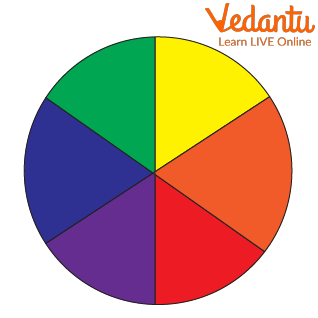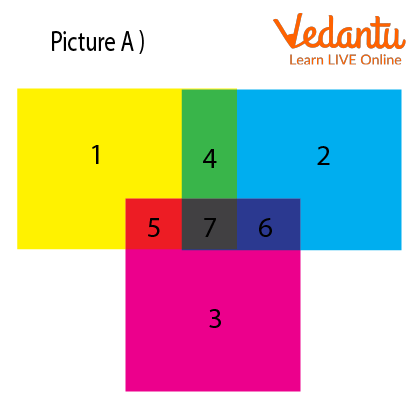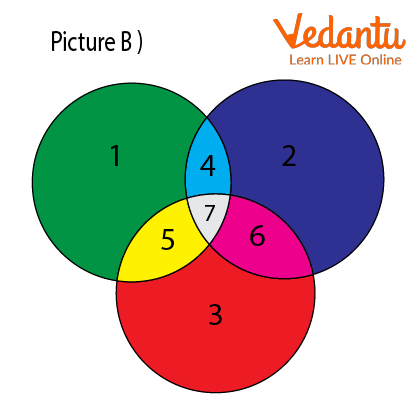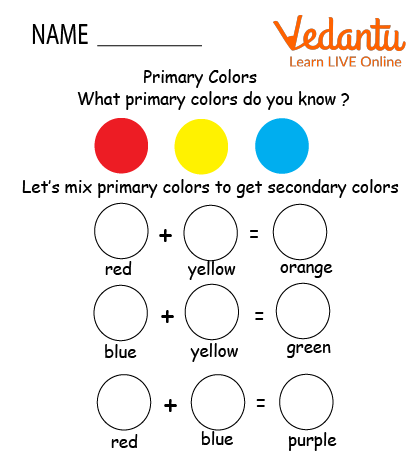




Why Learning Colour Names Matters for Early Childhood Development
What if our World becomes black and white? We can't even imagine how boring our lives would be without colours. The colours are very important. Every object has its specific colour, as the sky is of blue colour, the trees are green, etc. Without light, there will be no colour. When we see colours, we see many types of light bouncing off the objects. Scientists used the term wavelength to describe these light waves. Some light waves travel with long wavelengths, while others travel with short wavelengths.
Light having different wavelengths appears in different colours. For example, light with a long wavelength appears as red light, and light with a short wavelength appears as violet light. Usually, all the light wavelengths travel together as white light.
Colour Chart for Kids
We can make any kind of colour by mixing three colours of light, i.e., red, blue, and green. These are the colours that, when combined in different proportions, can make any other colour combination. We will see the basic colour chart for kids in this article. The colours like red, blue, and green are known as the primary colours of light. We can produce all the other colours by mixing these primary light colours. For example, the yellow light will be formed if a beam of green light shines over a beam of red light. To use colours in printed books, people take the help of inks.
Mixing of Colours
The pigments or substances that reflect certain light colours help the inks, paints, dyes, and crayons get their colour. The pigments have three primary colours: magenta (a purplish red), yellow, and cyan (a blue-green). By mixing these colours in different proportions, we can make all other colours. For example, green ink is formed by mixing cyan ink and yellow ink.

Colour wheel
Colours
The cells found in the eyes are known as cones. These cones make it possible for humans to see different colours. The different types of cones absorb different colours. Some people are colour blind, and this does not mean they cannot see any colour at all. Commonly, according to people with colour blindness, certain colours, such as red and green, look the same.
Colouring Activities for Kids
Here are some colouring activities for kids.
Below is a picture showing some colours; every colour is given a specific number. You have to name every colour according to its number. So kids you learned so many things about colour in the article, so this task is for you.
So let's start!

Colouring Activity for kids
Answers:
1) Yellow
2) Blue
3) Pink
4) Green
5) Red
6) Purple
7) Black

Colouring Activity for kids
Answers:
1) Green
2) Purple
3) Red
4) Blue
5) Yellow
6) Pink
7) White
Colouring Sheets for Kids
Wonderful you have done the above task so well. So here is again a task for you. In this, you have to colour the below-given colouring worksheets for kids with the help of primary colours. All the best for this task. I'm sure you will do your best.

Colouring Sheets for kids
Summary
Colours play a very important role in our daily life. We have learned about the basic colour scheme in the above article. By mixing the primary colours, we can make all other colours. The colours not only help the human but also helps the animal in their way. According to scientists, apes and monkeys can see colour the same as humans do. Some other mammals, such as cats, may be colour blind, according to the scientist. The birds and fishes seem to recognize many different colours. Scientists think that bees are able to see ultraviolet colours. The colours with a shorter wavelength than violet are called ultraviolet colours. We humans cannot see ultraviolet colours.
FAQs on Basic Colour Names for Kids: Interactive Learning Online
1. What are the primary colours for kids?
The three primary colours are red, yellow, and blue. They are called 'primary' because you cannot create them by mixing other colours. They are the basic building blocks for making all other colours.
2. What are secondary colours and how do you make them?
Secondary colours are made by mixing two primary colours together. They are the next set of colours a child learns after the primaries. The main secondary colours are:
Mixing red and yellow creates orange.
Mixing yellow and blue creates green.
Mixing blue and red creates purple (or violet).
3. Which basic colours should a child learn first?
For young children, it's best to start with a few bright and distinct colours that are easy to identify. Based on the CBSE/NCERT syllabus for early years, a good starting set includes Red, Yellow, Blue, Green, Orange, Black, and White. These colours appear frequently in a child's environment, in things like toys, food, and nature.
4. Why is a ripe tomato red?
An object's colour is the light it reflects back to our eyes. Sunlight contains all colours, like in a rainbow. When sunlight hits a ripe tomato, its skin absorbs all the colours except for red. It reflects the red light, and that is what our eyes see. This is also why a banana looks yellow and a leaf looks green.
5. How are colours useful in our everyday life?
Colours provide important information and help keep us safe. For example:
Safety Signals: At a traffic light, red means 'stop' and green means 'go'.
Identifying Food: The colour of a fruit, like a banana turning from green to yellow, tells us it is ripe and sweet to eat.
Nature: Brightly coloured flowers attract bees and butterflies, which helps plants grow.
Feelings: We often use colours to describe feelings, like feeling 'blue' when sad.
6. What are the seven colours of the rainbow?
The rainbow has seven colours that always appear in the same order. The easiest way to remember them is with the name VIBGYOR. The colours are:
V - Violet
I - Indigo
B - Blue
G - Green
Y - Yellow
O - Orange
R - Red
7. What is the difference between black and white?
The main difference between black and white relates to light. In simple terms, we see white when an object reflects all the colours of light at once. We see black when an object absorbs almost all the colours of light and reflects very little. This is why a black T-shirt feels warmer in the sun—it absorbs more light energy.
8. Why is it important for young children to learn about colours?
Learning about colours is a fundamental part of a child's development. It helps them to:
Build Vocabulary: Kids learn to use colour words to describe the world around them.
Develop Sorting Skills: It helps them to sort, categorise, and compare objects (e.g., 'all the blue blocks').
Understand the World: It's the first step in understanding more complex concepts like signs, symbols, and art.
Promote Creativity: Choosing colours for drawing and painting allows for self-expression.





















